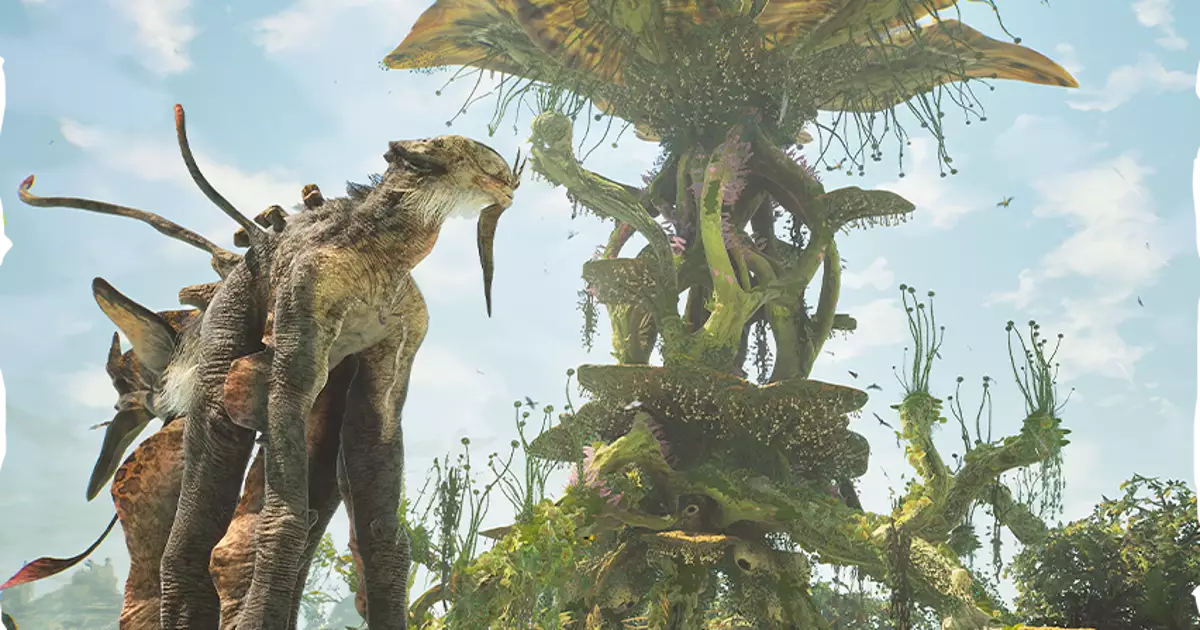Towers of Aghasba, the much-anticipated open-world game developed by Dreamlit, has begun to incite excitement and intrigue with new gameplay footage that showcases its vibrant, ecotribal world. Slated for release on November 19, 2024, the game invites players into a universe filled with lush environments, enigmatic creatures, and an overarching theme that marries exploration with ecological responsibility. However, as with any promising title, critical scrutiny is necessary to assess whether this depth translates into a fulfilling gaming experience or if it merely dances on the surface of its ambitious themes.
Set in the backdrop of an equatorial paradise, players assume the role of a junior architect for the Shimu tribe, tasked with revitalizing a land ravaged by a malevolent force called the Withered. This recovery journey is presented through mechanics centered on exploration, crafting, and nurturing the environment, which might initially seem appealing to gamers friendly to eco-conscious narratives. Yet, one has to ponder if the enchanting visuals and appealing gameplay mechanics are layered enough to sustain long-term engagement or whether they offer a fleeting thrill that quickly reveals itself to be shallow.
The key verbs shared in the game—exploration, village-building, and creature-nurturing—hold potential for meaningful player experience. However, these elements risk falling into the trap of typical survival games, where mechanics can often feel repetitive and uninspired. The presence of optional combat against fantastical beasts, such as megasloths, can create moments of excitement, yet it also raises concerns about how these actions align with the game’s overall theme of harmony with nature. Players who find joy in nurturing the digital ecosystem, for instance, may feel conflicted about the necessity of violence embedded within the gameplay loop.
Dreamlit’s portrayal of the Shimu tribe and the ecological themes at the heart of Towers of Aghasba bears a resemblance to real-world indigenous cultures. However, this presentation must be approached with caution. While the representation of tribal motifs and practices may provide a visually stunning experience, it poses a significant question: is the game engaging with these themes with the depth they deserve, or are they merely employed as a demographic aesthetic? The danger lies in appropriating cultural elements without adequately reflecting the complexities and histories behind them, potentially reducing them to a mere backdrop for a standard gameplay experience.
An intrinsic part of this critique revolves around the usage of a holographic building system—a decision that offers streamlined gameplay but also distances players from the organic craftsmanship that might enrich their experience. The aesthetic clash between organic structures and technological interfaces can feel jarring and may inhibit the immersive quality that is vital for a game steeped in themes of nature and community. While the premise of creativity within gameplay is compelling, the actual execution might come off as disjointed, diminishing the emotional and thematic engagement players seek.
As players would explore the animated landscapes, the mechanics of nurturing animals and constructing villages could offer moments of genuine connection to the world. The comparison to games like Subnautica is telling, as that title famously balanced engagement with the ecosystem and survival elements, albeit with a solid narrative backbone. Towers of Aghasba warrants such reflection, as it treads the delicate line of crafting an eco-centric narrative amidst a landscape fraught with the dangers posed by external forces.
The co-op support feature adds a promising layer of social interaction, hinting that players can experience the environment together, possibly mitigating some solitary challenges. However, the central question remains: will this game become just another addition to the crowded survival genre, or will it distinguish itself by genuinely exploring and enriching ecological relationships? The initial trailers spark a flicker of hope; only time will tell if this flicker blossoms into a fully realized and palpable gaming experience or fizzles into a hollow echo of unrealized potential.
In the end, Towers of Aghasba presents an adventure that could lift the genre above its numerous competitors, but that hinges critically on Dreamlit’s ability to weave together its gameplay mechanics, thematic depth, and cultural representations in a truly meaningful manner. The stage is set for an exploration of creativity and connection with nature; whether or not it will fulfill these aspirations remains the intriguing gamble we will have to take come November 19, 2024.


Leave a Reply